
The Challenge
Water Hyacinth
Can Cause Many Issues
Water hyacinth (Eichhornia crassipes) is a fast-growing aquatic plant known for its thick, blue-green leaves, thick stalks, and striking lavender flowers. Native to South America, it has become an invasive species in many tropical and subtropical regions worldwide. The plant reproduces rapidly through both seeds and vegetative propagation. It forms dense mats on water surfaces by producing daughter plants. Each plant can also produce thousands of tiny, long-lived seeds that remain viable in the water for years.
Power Generation
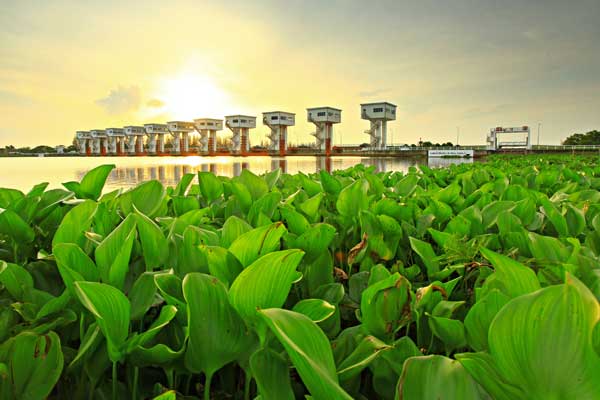
Water hyacinth can severely interfere with power generation by clogging hydroelectric dams and cooling systems in thermal power plants. Its rapid growth blocks water intake screens, reducing the flow needed for turbines and causing operational disruptions. The dense mats also increase evaporation, lowering water levels, and contribute to sediment buildup, which decreases reservoir capacity. Additionally, decaying plants can lead to oxygen depletion, harming aquatic ecosystems and further complicating maintenance efforts.
Obstructing Waterways
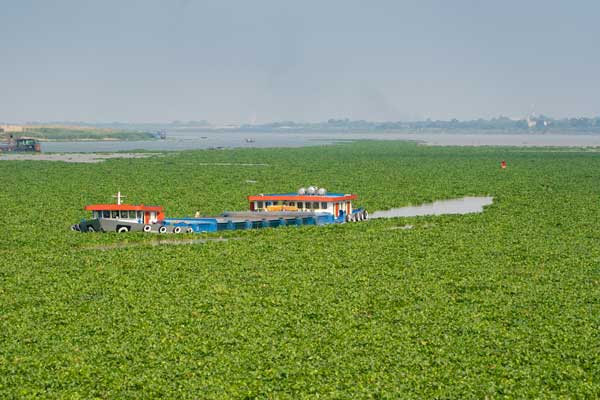
Water hyacinth obstructs waterways by forming dense, floating mats that block boat traffic, fishing activities, and water transport. These thick clusters make navigation difficult by tangling propellers, damaging boat engines, and increasing fuel consumption. In severe cases, entire waterways can become impassable, cutting off communities that rely on rivers and lakes for trade and transportation. The hyacinth also impedes fishing, which many people rely on to earn a living. In some areas entire waterways can become impassable, cutting off access to fishing spots and affecting trade.
SECONDARY PLANT GROWTH
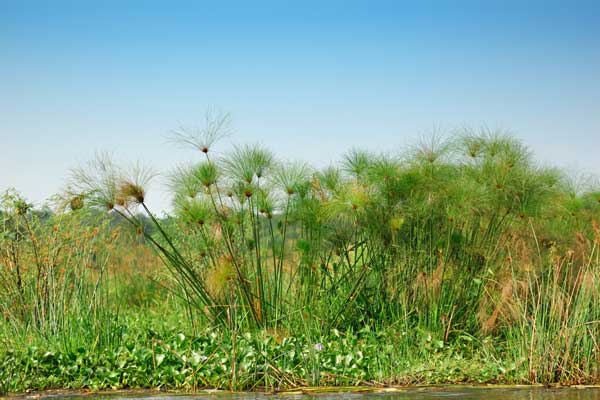
Water hyacinth can promote secondary plant growth, such as papyrus, by altering the aquatic environment. As dense mats of hyacinth die and decompose, they create nutrient-rich sediments that encourage the growth of emergent plants like papyrus. These conditions gradually transform open water bodies into marshy wetlands, reducing water flow and further accelerating vegetation spread. Over time, this shift in habitat can lead to the loss of navigable waterways and disrupt aquatic ecosystems.
AGRICULTURAL & IRRIGATION
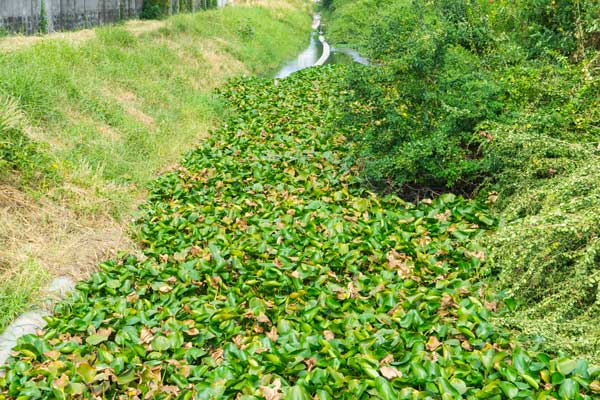
Water hyacinth negatively impacts agriculture and irrigation by reducing water availability and clogging irrigation channels. Its dense growth increases water loss through evaporation and blocks canals, pumps, and drainage systems, making it difficult for farmers to access water for crops. Additionally, as the plant decomposes, it depletes oxygen levels in the water, affecting water quality and harming aquatic life essential for farming communities. These issues lead to higher maintenance costs and reduced agricultural productivity.
FLOOD RISK
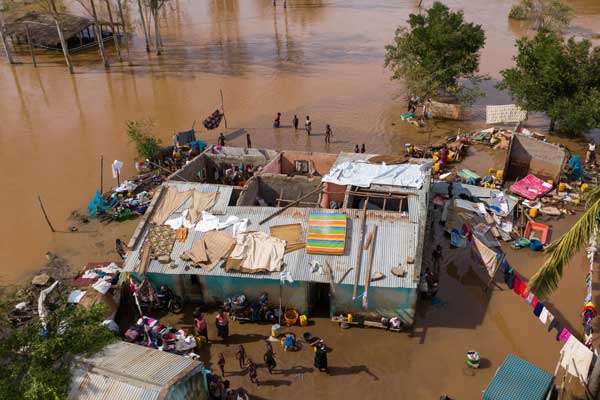
Water hyacinth increases flood risk by obstructing water flow in rivers, streams, and drainage systems. Its dense mats slow down the movement of water, causing sediment buildup and reducing the capacity of water bodies to handle heavy rainfall. During floods, these floating plants can accumulate against bridges and other structures, creating blockages that worsen flooding in nearby areas. Additionally, the plant’s rapid spread can choke floodplains, preventing excess water from draining properly and increasing the likelihood of prolonged flooding.
BREEDING GROUND FOR PESTS
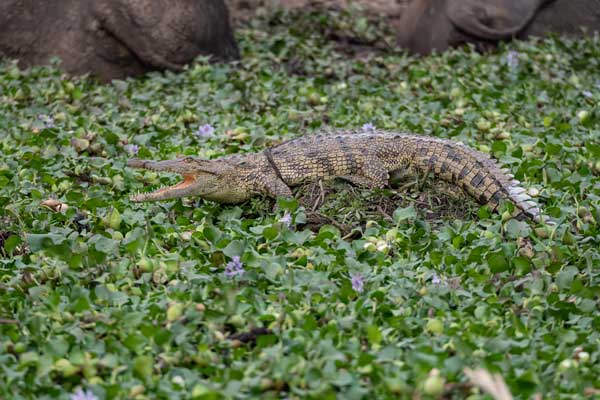
Water hyacinth serves as a breeding ground for pests by creating stagnant, oxygen-poor water conditions that attract disease-carrying insects and other harmful organisms. Its dense mats provide an ideal habitat for mosquitoes and snails, which spread diseases like malaria, dengue fever, and schistosomiasis. Additionally, water hyacinth can harbor rats, snakes, and crocodiles, increasing dangers for people who rely on these waters for fishing, farming, and daily activities. These infestations make the plant not only an environmental threat but also a serious public health and safety concern.
ECOLOGICAL DISRUPTIONS
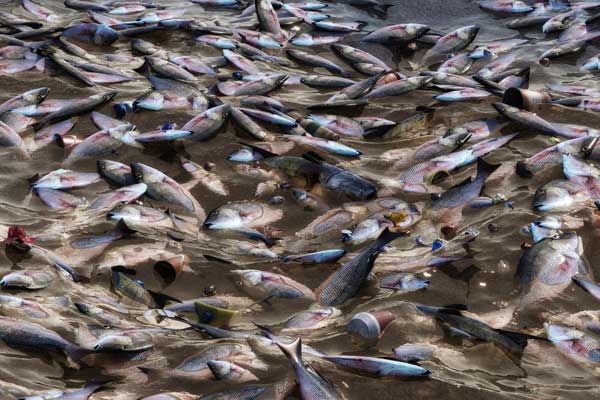
Water hyacinth causes major issues for the environment. It grows quickly and takes up space, blocking sunlight from reaching other plants in the water. This stops native plants from growing and can hurt the animals that depend on them. When the water hyacinth dies and breaks down, it uses up the oxygen in the water, making it hard for fish and other water creatures to survive. The thick mats of water hyacinth also change the flow of water, making it harder for other plants and animals to live. This can lead to a loss of wildlife and damage to the whole ecosystem.
